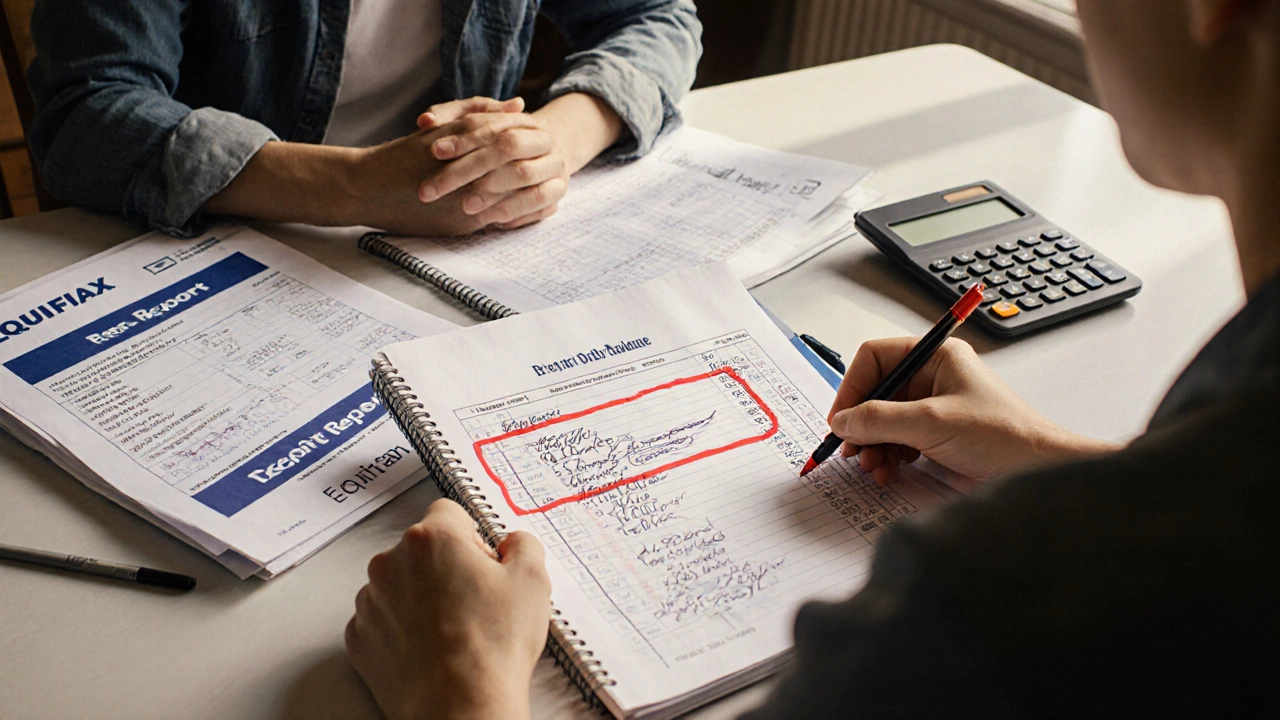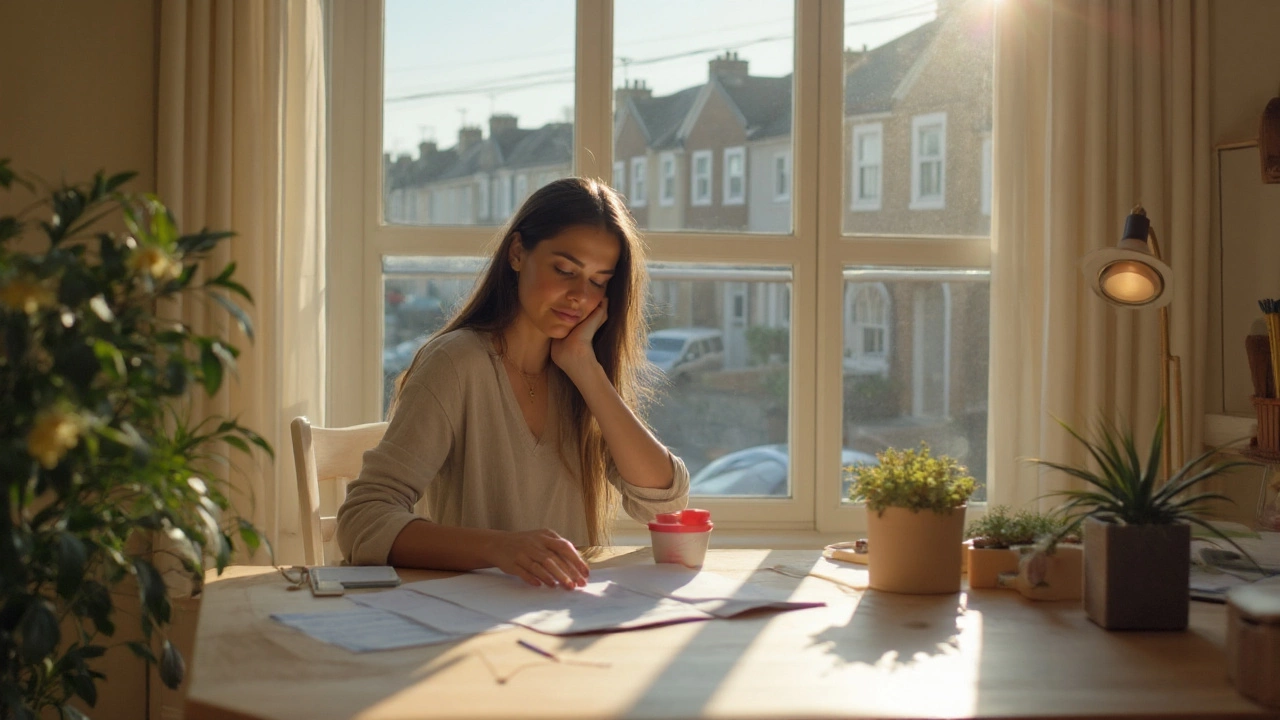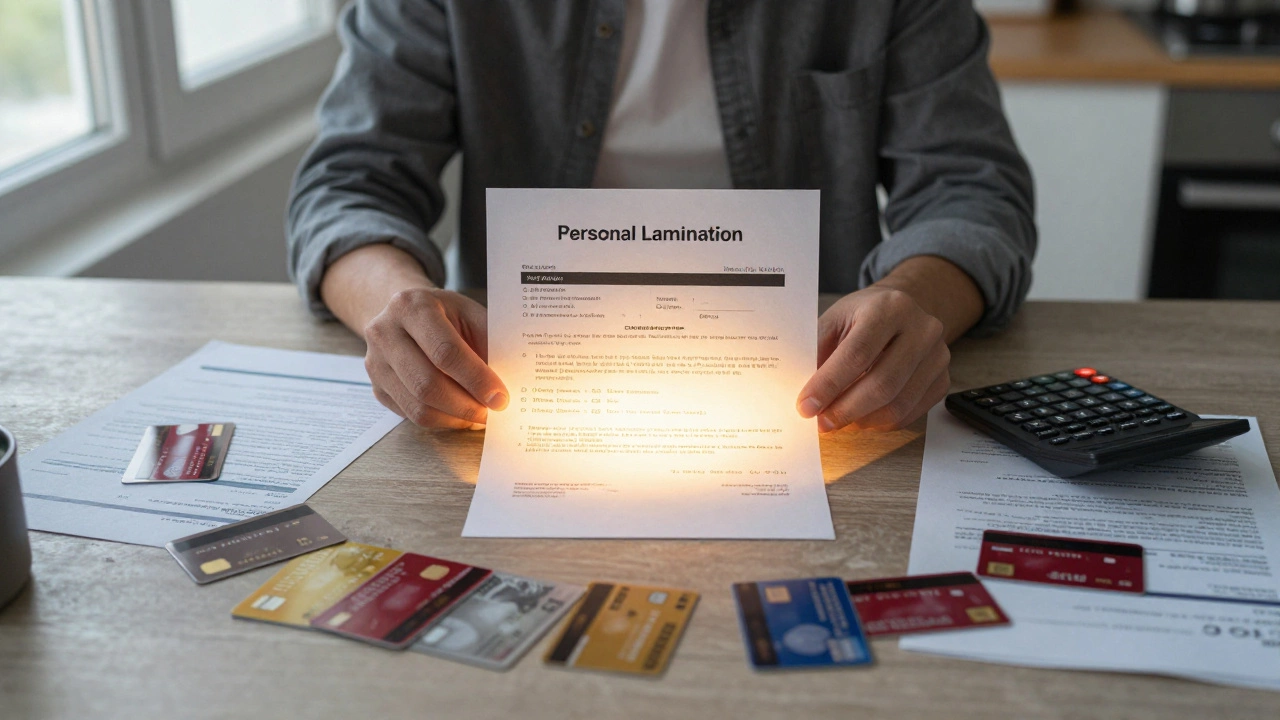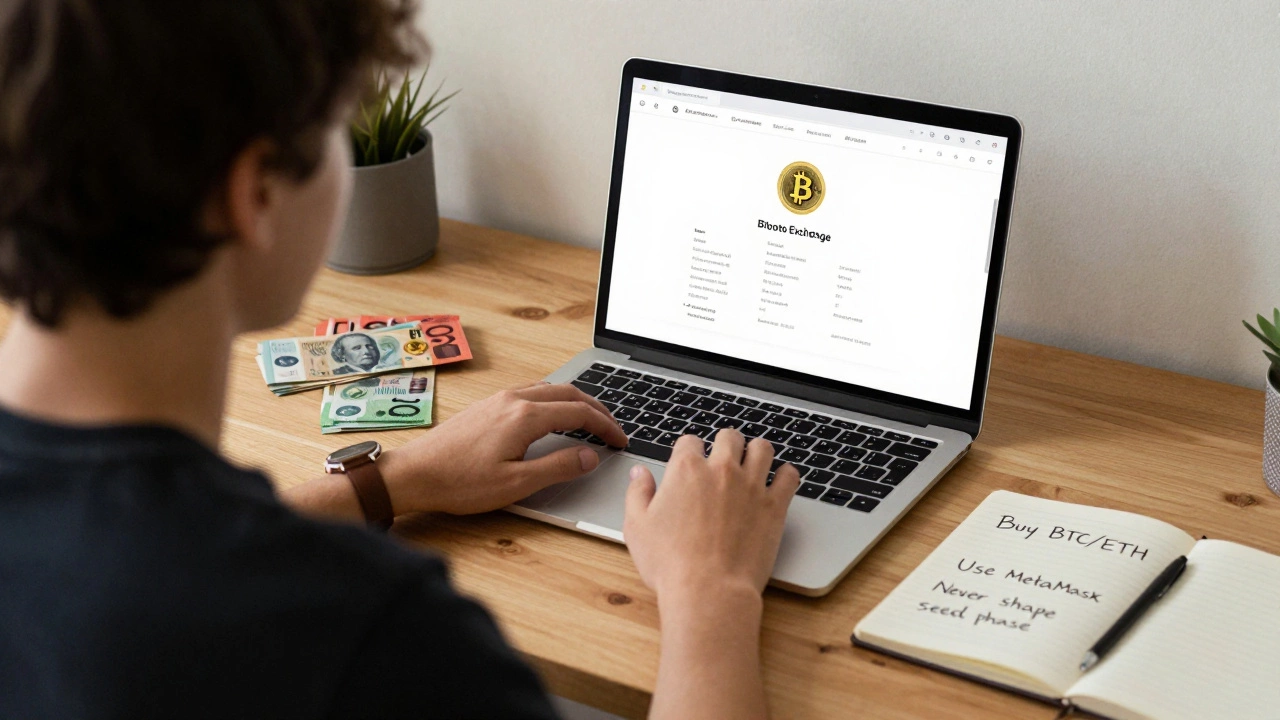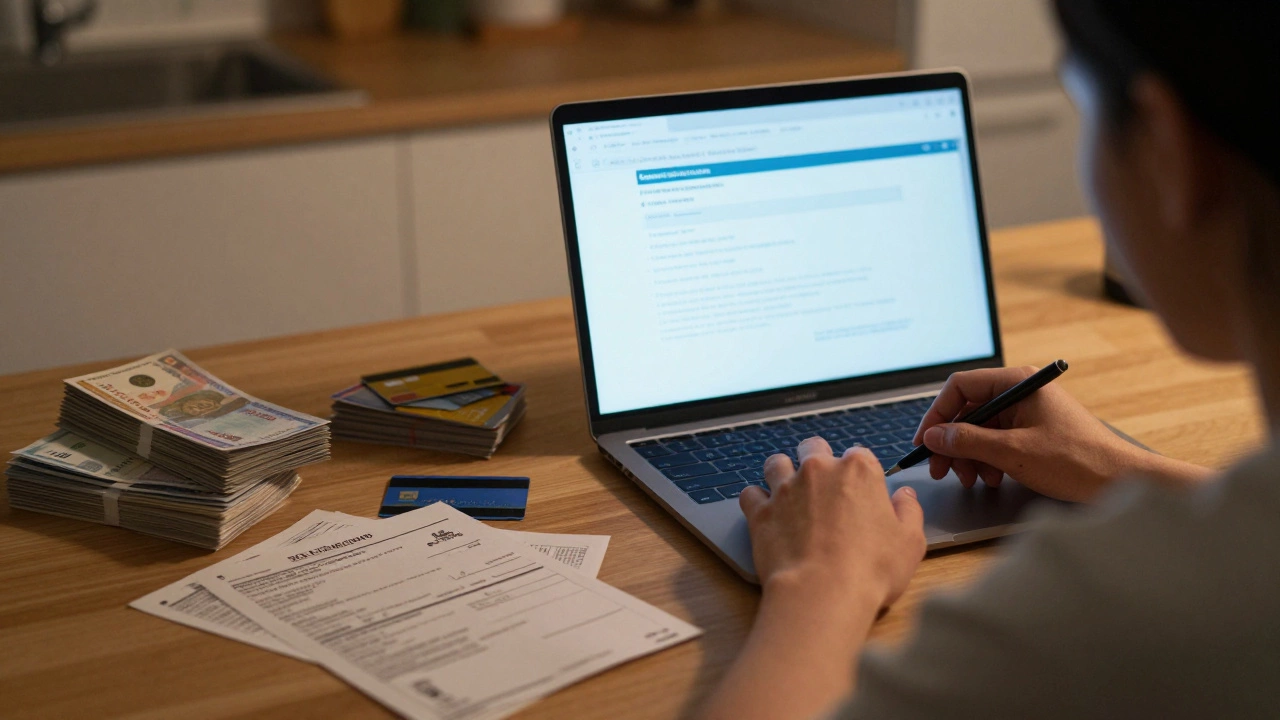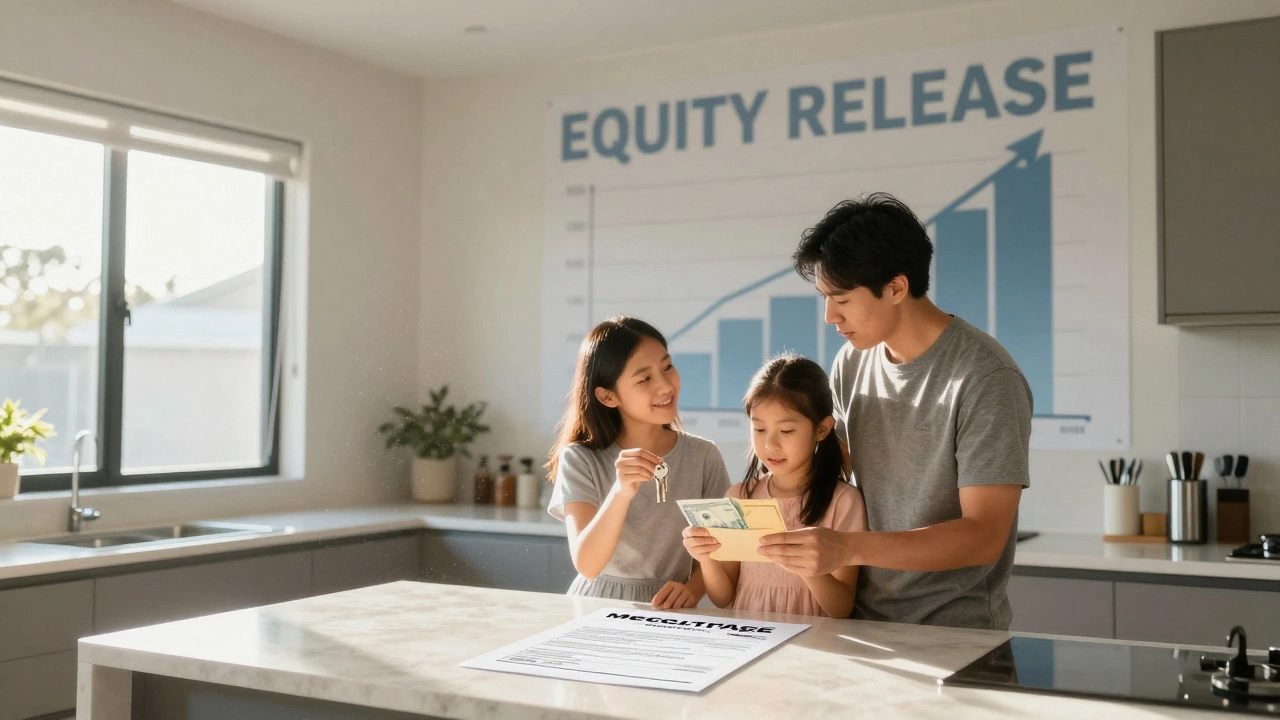Debt Repayment Calculator
Your Debt Summary
Your Debt Repayment Plan
12 Month GoalBreaking free from $30,000 in debt in just one year sounds impossible if you’re drowning in minimum payments, high interest, and stress. But it’s not. People do it every day - not by winning the lottery or getting a miracle raise, but by changing how they think about money. You don’t need to be rich. You just need to be consistent, ruthless with spending, and smart about how you attack what you owe.
Know exactly what you owe
Start by listing every debt you have. Don’t guess. Don’t rely on memory. Pull your credit report from Equifax a major credit reporting agency in Australia that tracks personal credit history and scores and Experian a global credit bureau that provides credit scores and reports used by lenders to assess risk. Write down the balance, interest rate, minimum payment, and creditor for each account. This includes credit cards, personal loans, medical bills, even that $800 you owe your cousin.Let’s say your $30,000 looks like this:
- $12,000 credit card at 21% APR
- $8,000 personal loan at 14% APR
- $6,000 medical debt at 0% interest
- $4,000 student loan at 6% APR
Now you see the real problem: the credit card is eating you alive. That $12,000 at 21% is costing you over $210 a month just in interest. That’s money disappearing with no return. You need to stop the bleeding before you fix anything else.
Stop adding new debt
This is non-negotiable. If you keep using your credit cards while trying to pay them off, you’re running on a treadmill. Close the accounts. Cut up the cards. Or better yet, lock them in a freezer. No exceptions. Not even for emergencies. If something breaks, you fix it with cash or delay it. No new loans. No buy-now-pay-later schemes. No tapping into your savings unless it’s life-or-death.Many people fail because they don’t change their habits. You don’t need a new phone, a weekend getaway, or fancy coffee. You need freedom from debt. That’s the goal. Every dollar you save on non-essentials is a dollar that goes straight to your debt.
Build a $1,000 emergency buffer
Before you go all-in on debt repayment, set aside $1,000. Not $5,000. Not $2,000. $1,000. This isn’t a luxury. It’s your shock absorber. If your car breaks down, your fridge dies, or you get a surprise medical bill, you don’t have to put it on a credit card. That $1,000 keeps you from undoing all your progress.How do you get it? Sell stuff. Pick up a weekend gig. Skip eating out for a month. Use your tax refund. Even $50 a week adds up to $2,600 in six months. You don’t need to wait until you have $1,000 saved before you start paying down debt - just start small. Pay $100 a week toward your debt while saving $25 a week for the buffer. You’ll have both in under four months.
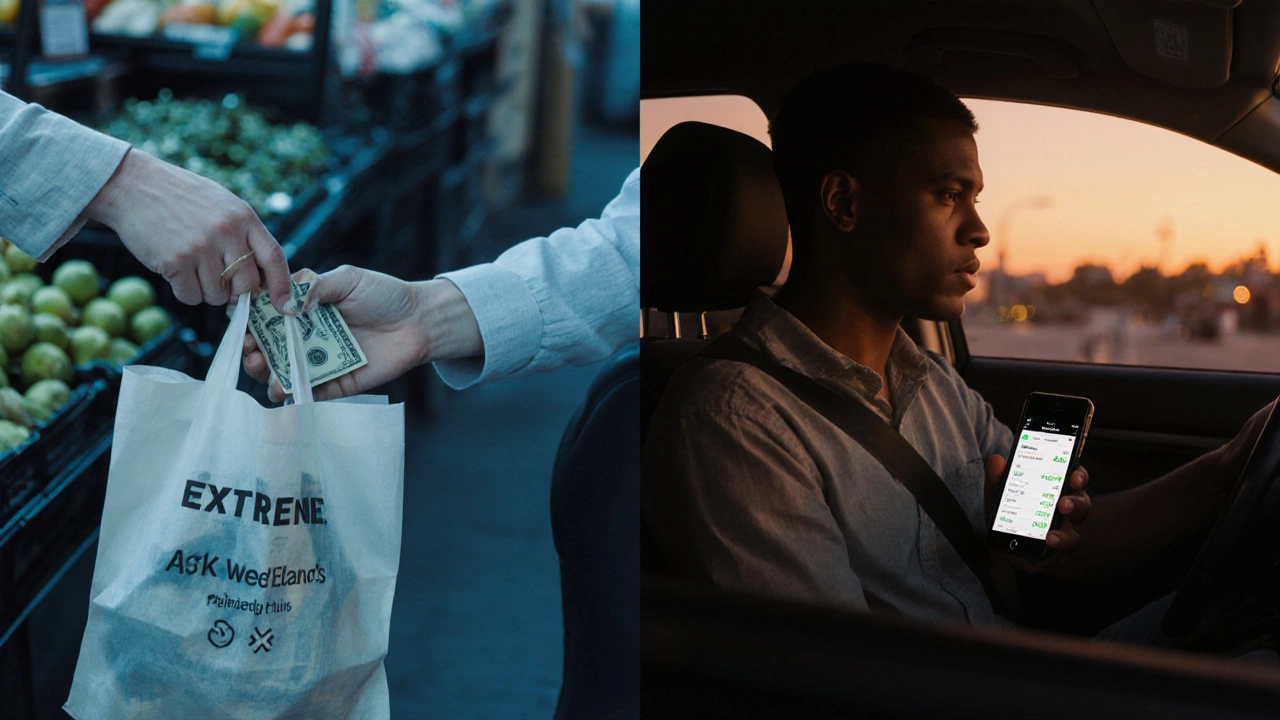
Choose your debt repayment strategy
There are two proven methods: the snowball and the avalanche. Both work. The difference is psychology vs. math.The snowball method means paying off the smallest balance first, no matter the interest rate. You gain momentum. When you wipe out that $4,000 student loan, you feel a win. That momentum keeps you going. You then take the $150 you were paying on the student loan and add it to the next smallest debt. It’s emotional fuel.
The avalanche method means attacking the highest interest rate first. Mathematically, this saves you the most money. In our example, that’s the $12,000 credit card at 21%. You pay minimums on everything else, then throw every extra dollar at that card. This saves you thousands in interest over time.
For $30,000 in one year, the avalanche method is better. But if you’re the type who needs quick wins to stay motivated, start with snowball - then switch to avalanche after your first win. Either way, you’ll pay it off.
Boost your income - not just cut spending
To pay off $30,000 in 12 months, you need to pay $2,500 a month. Let’s say your minimum payments total $800 a month. That means you need to find $1,700 extra every month.That’s not easy. But it’s doable. Here’s how people in Brisbane are doing it right now:
- Driving for Uber or DiDi on weekends - $600 to $1,000/month
- Freelancing on Upwork or Airtasker - graphic design, writing, admin work - $400 to $800/month
- Part-time retail or hospitality shifts - $300 to $500/month
- Selling handmade goods on Etsy or Facebook Marketplace - $200 to $600/month
- Referral bonuses from banks or energy providers - $100 to $300 one-time
You don’t need to work 80 hours a week. You need to work smarter. Even one extra shift a week at $25/hour gives you $100 extra. Two shifts? $200. That’s $2,400 a year. Add that to your savings from cutting Netflix, gym memberships, and takeout, and you’re halfway there.
Consolidate your debt - smartly
If you have multiple high-interest debts, a debt consolidation loan a single loan used to combine multiple debts into one payment with a lower interest rate can be a game-changer. Look for a personal loan with a rate under 10%. Many Australian banks like Commonwealth Bank one of Australia’s largest financial institutions offering personal loans and credit products, ANZ a major Australian bank that provides personal loans and debt consolidation options, or NAB National Australia Bank, offering competitive personal loan rates for debt consolidation offer these.Example: You consolidate your $12,000 credit card (21%) and $8,000 personal loan (14%) into one $20,000 loan at 8.5%. Your monthly payment drops from $600 to $400, and your interest savings over a year? Over $2,000. That’s money you can redirect to your other debts.
Warning: Only do this if you close the original accounts. If you consolidate but keep using your credit cards, you’ll end up with $50,000 in debt. That’s not progress - that’s a trap.
Track progress weekly
You need to see results. Otherwise, doubt creeps in. Use a free tool like MoneyBrilliant a personal finance app in Australia that tracks spending, budgeting, and debt repayment progress or just a spreadsheet. Update it every Sunday. Watch your balances drop. Celebrate when you pay off a card. Take a photo of your updated balance and put it on your fridge. This isn’t just math - it’s mental health.After three months, you should see your total debt down by at least $7,000 to $9,000. If you’re not there, adjust. Sell more stuff. Pick up an extra shift. Cut another expense. You have 9 months left. You can do this.
What to do when you hit a wall
There will be weeks when you’re tired, sick, or your car breaks down. That’s normal. Don’t quit. Don’t feel guilty. Just adjust.If you miss a payment, call your creditor. Most will work with you - especially if you’ve been consistent. Ask for a hardship plan. Some offer temporary reduced payments or paused interest. Don’t wait until you’re behind. Act early.
If your income drops, find a side gig that pays faster. If you’re overwhelmed, talk to a free financial counselor. National Debt Helpline a free Australian service offering advice and support for people struggling with debt can help you negotiate with creditors and create a realistic plan. No judgment. No cost.
You can do this
Paying off $30,000 in one year isn’t about being rich. It’s about being focused. It’s about choosing freedom over comfort. It’s about saying no to small pleasures so you can say yes to a future without fear.People who do it don’t have superpowers. They just refuse to quit. They track every dollar. They work extra hours. They say no to things they used to think they needed. And when they see their debt shrink, they keep going.
You can too.
Is it possible to pay off $30,000 debt in one year?
Yes, it’s possible - but only if you’re willing to make serious changes. You’ll need to pay around $2,500 per month toward your debt. That means cutting all non-essential spending, increasing your income through side gigs, and using a smart repayment strategy like the avalanche method. Many people in Australia have done it by combining budgeting, debt consolidation, and extra work.
What’s the best way to pay off multiple debts fast?
The avalanche method is mathematically the best - pay off the debt with the highest interest rate first while making minimum payments on the others. This saves the most money on interest. If you need motivation, start with the snowball method (smallest balance first) to build confidence, then switch to avalanche after your first win. Either way, consistency matters more than the method you pick.
Should I get a debt consolidation loan?
Only if you can get a lower interest rate and you’re willing to close your old credit accounts. A consolidation loan can simplify payments and reduce interest - for example, turning $12,000 at 21% into a $20,000 loan at 8.5%. But if you keep using your old cards, you’ll end up with more debt. Use it as a tool to escape, not to expand.
How much extra income do I need to pay off $30,000 in a year?
You’ll need to pay about $2,500 per month. If your current minimum payments total $800, you’ll need to find $1,700 extra each month. That’s doable with a mix of side gigs - like driving for Uber ($600-$1,000), freelancing ($400-$800), or part-time work ($300-$500). Selling unused items can add another $200-$500. It’s not easy, but it’s possible with discipline.
What if I can’t make a payment one month?
Contact your creditor immediately. Don’t wait until you’re late. Most lenders have hardship programs that can lower your payment, pause interest, or extend your term temporarily. In Australia, the National Debt Helpline offers free advice and can help you negotiate with creditors. Missing one payment isn’t the end - giving up is.

